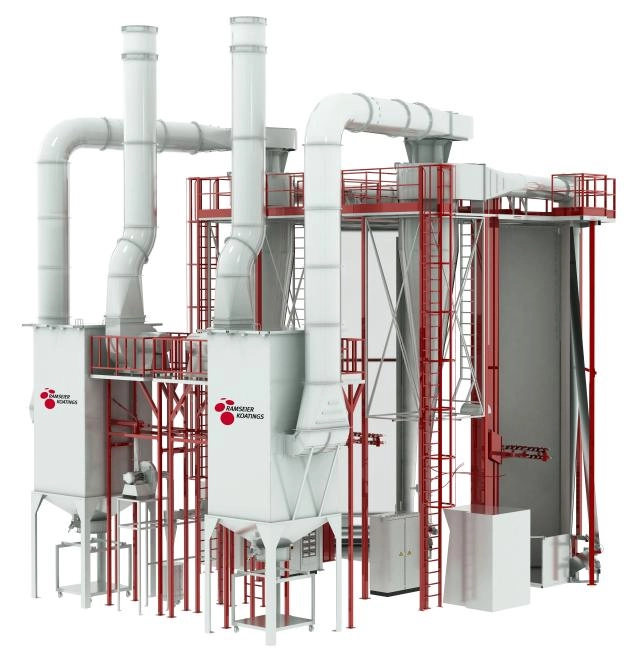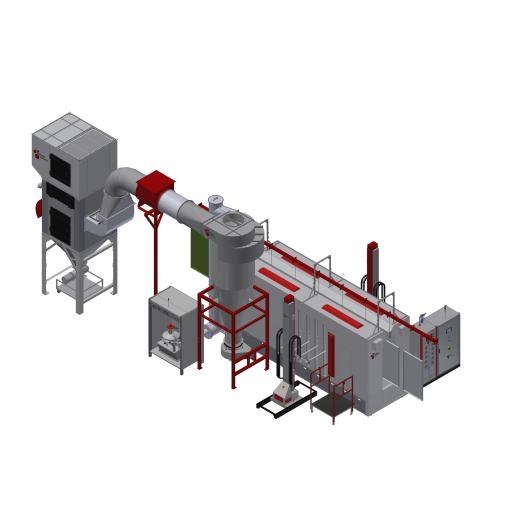Content Menu
● Introduction
● Understanding Coating Processes and Challenges
>> The Importance of Coating Efficiency and Quality
>> Common Challenges in Coating Operations
● What Are Data Management Systems?
>> Definition and Core Components
>> How DMS Integrates with Coating Operations
● Enhancing Coating Efficiency Through Data Management
>> Real-Time Monitoring and Control
>>> Example: Automated Thickness Control
>> Process Optimization and Predictive Maintenance
>> Reducing Waste and Energy Consumption
● Improving Coating Quality with Data Management Systems
>> Enhanced Traceability and Compliance
>>> Example: Batch Recall Management
>> Statistical Process Control (SPC) and Quality Analytics
>> Facilitating Continuous Improvement
● Key Features of Effective Data Management Systems for Coating Operations
>> Scalability and Flexibility
>> User-Friendly Interfaces
>> Robust Security and Data Integrity
>> Integration with Other Enterprise Systems
● Implementation Strategies and Best Practices
>> Assessing Needs and Setting Objectives
>> Phased Deployment and Change Management
>> Training and Support
>> Continuous Evaluation and Improvement
● Case Studies: Real-World Impact of Data Management Systems
>> Automotive Industry
>> Electronics Manufacturing
>> Aerospace Applications
● The Future of Data Management in Coating Operations
>> Emerging Technologies
>> Greater Emphasis on Sustainability
>> Enhanced Collaboration and Data Sharing
● Frequently Asked Questions (FAQs)
Introduction
In the modern manufacturing landscape, coatings play a pivotal role in enhancing product durability, aesthetics, and performance across industries such as automotive, aerospace, electronics, and construction. As customer expectations rise and regulatory requirements become more stringent, manufacturers are compelled to deliver coatings that not only meet but exceed standards for quality and efficiency. Achieving this requires meticulous control over production processes, materials, and environmental conditions.
Data management systems (DMS) have emerged as transformative tools in this context. By systematically collecting, organizing, analyzing, and leveraging data throughout the coating lifecycle, these systems enable manufacturers to optimize processes, minimize waste, and ensure consistent quality. This article explores the multifaceted role of data management systems in improving coating efficiency and quality, delving into their mechanisms, benefits, challenges, and future prospects.

Understanding Coating Processes and Challenges
The Importance of Coating Efficiency and Quality
Coating efficiency refers to the optimal use of resources—materials, energy, time—to achieve the desired coating thickness, uniformity, and performance with minimal waste. Quality, on the other hand, encompasses attributes such as adhesion, durability, appearance, and resistance to environmental factors. Both efficiency and quality are critical for:
- Reducing production costs
- Enhancing product reliability
- Meeting regulatory and customer requirements
- Minimizing environmental impact
Common Challenges in Coating Operations
Despite technological advancements, coating operations face persistent challenges:
- Variability in raw materials: Differences in batch quality can affect coating performance.
- Process inconsistencies: Fluctuations in temperature, humidity, and application parameters can lead to defects.
- Manual data recording: Increases the risk of errors and makes traceability difficult.
- Lack of real-time insights: Delays in identifying issues can result in costly rework or scrap.
What Are Data Management Systems?
Definition and Core Components
A data management system is a suite of software tools and protocols designed to collect, store, process, and analyze data throughout an organization's operations. In the context of coating processes, a DMS typically includes:
- Data acquisition modules: Sensors and devices that capture process and quality data.
- Centralized databases: Secure repositories for structured and unstructured data.
- Analytics engines: Tools for statistical analysis, trend detection, and predictive modeling.
- User interfaces: Dashboards and reporting tools for operators, engineers, and managers.
- Integration capabilities: APIs and connectors to link with other enterprise systems (e.g., ERP, MES, LIMS).
How DMS Integrates with Coating Operations
DMS can be seamlessly integrated with coating lines, laboratory equipment, and quality control stations. They automate data capture from sources such as:
- Coating thickness gauges
- Environmental sensors (temperature, humidity)
- Production machinery (speed, pressure, flow rates)
- Laboratory instruments (viscosity, adhesion testers)
Enhancing Coating Efficiency Through Data Management
Real-Time Monitoring and Control
One of the primary benefits of DMS is the ability to monitor coating processes in real time. By continuously collecting data from sensors and equipment, the system provides immediate feedback on critical parameters such as:
- Coating thickness
- Line speed
- Oven temperature
- Humidity levels
Operators can receive alerts when values deviate from setpoints, enabling swift corrective actions. This reduces the likelihood of producing out-of-spec products and minimizes material waste.
Example: Automated Thickness Control
Suppose a coating line is equipped with inline thickness gauges connected to the DMS. If the system detects a trend toward excessive thickness, it can automatically adjust application parameters or alert operators, ensuring optimal material usage.
Process Optimization and Predictive Maintenance
DMS analytics can identify patterns and correlations that are not apparent through manual observation. For instance, by analyzing historical data, the system can:
- Pinpoint process bottlenecks
- Recommend optimal settings for different coating formulations
- Predict equipment failures based on vibration, temperature, or pressure trends
Predictive maintenance, in particular, helps prevent unplanned downtime and extends equipment lifespan, further boosting efficiency.
Reducing Waste and Energy Consumption
By providing granular insights into material usage and process efficiency, DMS enables manufacturers to:
- Adjust batch sizes to minimize leftovers
- Optimize curing and drying cycles to reduce energy consumption
- Implement just-in-time material replenishment
These measures contribute to cost savings and support sustainability goals.
Improving Coating Quality with Data Management Systems
Enhanced Traceability and Compliance
Traceability is essential for quality assurance and regulatory compliance, especially in industries such as automotive and aerospace. DMS maintains comprehensive records of:
- Raw material batches
- Process parameters
- Quality control results
- Operator actions
This end-to-end traceability allows manufacturers to quickly identify the root cause of defects, implement corrective actions, and provide documentation for audits.
Example: Batch Recall Management
If a defect is traced back to a specific batch of raw material, the DMS can quickly identify all affected products, facilitating targeted recalls and minimizing reputational and financial damage.
Statistical Process Control (SPC) and Quality Analytics
DMS supports advanced quality management techniques such as statistical process control. By continuously analyzing process and quality data, the system can:
- Detect trends indicating potential quality issues
- Trigger alarms for out-of-control conditions
- Generate control charts and capability analyses
This proactive approach reduces the incidence of defects and ensures consistent product quality.
Facilitating Continuous Improvement
Data-driven insights from DMS empower organizations to implement continuous improvement initiatives such as Six Sigma and Lean Manufacturing. By quantifying the impact of process changes and tracking key performance indicators (KPIs), teams can:
- Identify areas for improvement
- Validate the effectiveness of corrective actions
- Foster a culture of quality and innovation
Key Features of Effective Data Management Systems for Coating Operations
Scalability and Flexibility
An effective DMS should accommodate the evolving needs of coating operations, from small-scale pilot lines to large-volume production. Scalability ensures that the system can handle increasing data volumes and support additional processes or equipment.
User-Friendly Interfaces
Intuitive dashboards, customizable reports, and mobile access are crucial for user adoption. Operators and engineers should be able to easily visualize data, interpret trends, and make informed decisions.
Robust Security and Data Integrity
Given the sensitivity of production and quality data, DMS must incorporate strong security measures such as:
- Access controls and user authentication
- Data encryption
- Audit trails to track changes and access
Data integrity is equally important to ensure that records are accurate, complete, and tamper-proof.
Integration with Other Enterprise Systems
Seamless integration with ERP, MES, LIMS, and other business systems enhances data flow and eliminates silos. This enables holistic decision-making and supports end-to-end process optimization.
Implementation Strategies and Best Practices
Assessing Needs and Setting Objectives
Successful DMS implementation begins with a thorough assessment of operational needs and objectives. Key considerations include:
- Which processes and data sources require monitoring?
- What are the primary goals (e.g., reduce defects, improve traceability)?
- Who will use the system, and what are their requirements?
Phased Deployment and Change Management
A phased approach—starting with pilot projects and gradually expanding—allows organizations to validate benefits, address challenges, and build user confidence. Change management is critical to ensure buy-in from all stakeholders.
Training and Support
Comprehensive training programs help users maximize the value of DMS. Ongoing technical support and regular system updates ensure continued reliability and relevance.
Continuous Evaluation and Improvement
Regular reviews of system performance, user feedback, and evolving business needs enable organizations to refine their DMS and sustain long-term benefits.
Case Studies: Real-World Impact of Data Management Systems
Automotive Industry
An automotive parts manufacturer implemented a DMS to monitor coating thickness and cure cycles in real time. The system reduced material waste by 15%, improved first-pass yield, and enabled rapid root cause analysis of defects.
Electronics Manufacturing
A printed circuit board (PCB) producer adopted a DMS to track environmental conditions and process parameters during conformal coating. The result was a 20% reduction in coating defects and enhanced compliance with industry standards.
Aerospace Applications
An aerospace supplier integrated DMS with laboratory information management systems to ensure traceability from raw materials to finished components. This facilitated compliance with stringent regulatory requirements and improved customer satisfaction.
The Future of Data Management in Coating Operations
Emerging Technologies
Advancements in artificial intelligence (AI), machine learning, and the Industrial Internet of Things (IIoT) are poised to further enhance the capabilities of DMS. These technologies enable:
- Predictive analytics for process optimization
- Automated anomaly detection
- Real-time adaptive control of coating processes
Greater Emphasis on Sustainability
As sustainability becomes a top priority, DMS will play a central role in tracking and reducing the environmental footprint of coating operations. This includes monitoring energy consumption, emissions, and waste generation.
Enhanced Collaboration and Data Sharing
Cloud-based DMS platforms facilitate collaboration across geographically dispersed teams and supply chains. Secure data sharing with customers and partners supports transparency and strengthens business relationships.

Frequently Asked Questions (FAQs)
1. What are the main benefits of using a data management system in coating operations?
Data management systems improve process efficiency, reduce material waste, enhance product quality, ensure traceability, and support compliance with industry standards. They also enable real-time monitoring and facilitate continuous improvement.
2. How does a DMS help in reducing coating defects?
By providing real-time data and analytics, a DMS enables early detection of process deviations and quality issues. This allows operators to take corrective actions before defects occur, reducing rework and scrap.
3. Can a data management system be integrated with existing production equipment?
Yes, most modern DMS platforms offer integration capabilities through APIs and standard communication protocols, allowing seamless connectivity with a wide range of production equipment and enterprise systems.
4. What challenges might organizations face when implementing a DMS?
Common challenges include resistance to change, data integration complexities, initial investment costs, and the need for ongoing training and support. A phased implementation and strong change management can help address these issues.
5. How does a DMS support regulatory compliance in coating industries?
A DMS maintains comprehensive records of materials, processes, and quality results, enabling organizations to demonstrate compliance during audits and respond quickly to regulatory inquiries or recalls.
Data management systems revolutionize coating operations by enabling real-time monitoring, optimizing processes, and ensuring traceability. Their integration reduces waste, boosts quality, and supports compliance. As technology advances, DMS will further drive efficiency, sustainability, and innovation in the coatings industry.
Hot Tags: China, Global, OEM, private label, manufacturers, factory, suppliers, manufacturing company








































 .
. 